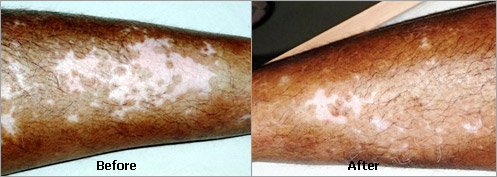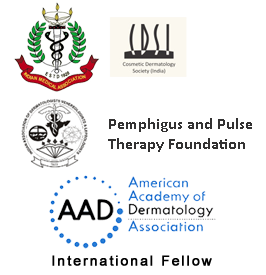LEUCODERMA (VITILIGO) SURGERY

Vitiligo or leucoderma, as a disease, is a big challenge to live with, for the person suffering from it. It is also a big challenge for the treating doctor, to get the patient well and rid of the disease. The first line of management for Vitiligo or Leucoderma remains medical therapy. This includes both oral and topical medications. The oral medication mainly helps to arrest the spread of the disease. There are various topical modalities of treatment including topical PUVA & NB-UBV therapy (Phototherapy).
Despite this, some patients fail to repigment completely. The basic principle of all surgical methods is transfer of melanocytes (the colour bearing cells) from normal uninvolved skin into a stable leucoderma lesion, where they propagate and grow into normal cells providing colour to the white skin.
There are various types of surgical options available to treat such resistant patches of vitiligo. They are:
» Split thickness grafting (Epidermal grafting)
» Punch grafting
» Suction blister grafting
» Melanocyte Transplantation- This is a type of cellular graft (Autologous noncultured melanocyte-keratinocyte transplantation) or “MELANOCYTE TRANSPLANTATION” which is a more recent and a novel method that gives better and faster results.
The following are the advantages of the Melanocyte transplantation technique over conventional tissue grafting technique:
» The main advantage is that a smaller amount of donor tissue is needed to cover a large recipient area.
» Much less postoperative pain and downtime.
» Cosmetic acceptability and colour matching is much better with this technique.
» Patient can get back to work faster.
» This technique is more suitable for cosmetically important areas like eyelids, ears, face, back of hands, etc.


